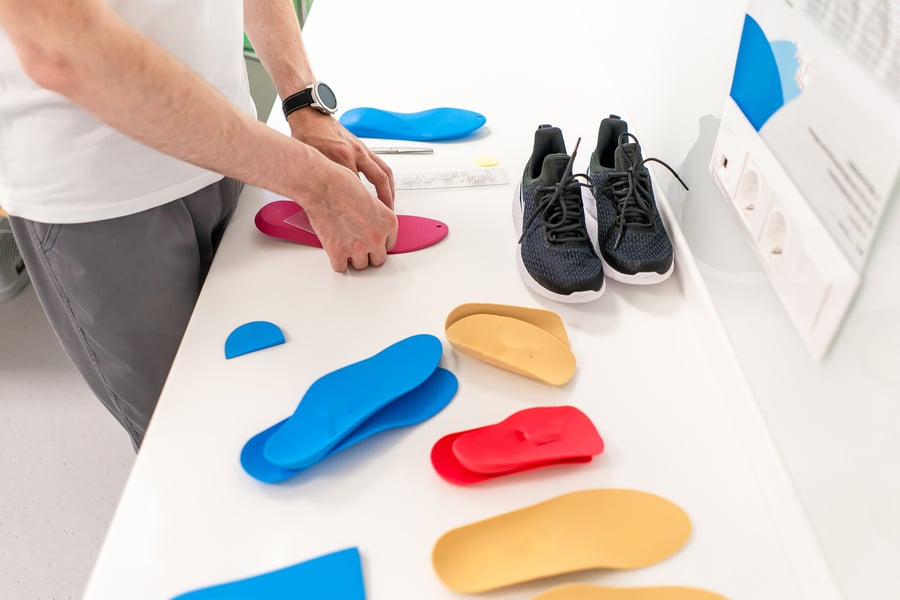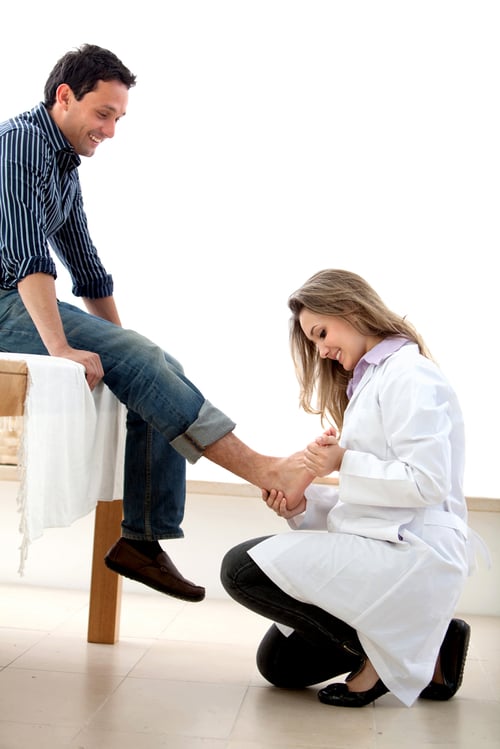
Orthotic shoe inserts, commonly known as “orthotics” are cushions that fit into your shoe, generally for the purpose of correcting problems with your gait. They’re one of the many tools available to podiatrists and physical therapists, whether they’re for a short-term fix or long-term corrective action.
Many factors can cause you to need orthotics, including custom and over-the-counter (OTC) models.
Function
The purpose of an orthotic insert is to redirect and redistribute the motion of the foot’s natural pronation. The idea that orthotics conform to your foot and cause it to strike the ground in a controlled manner is a common misconception. However, it’s more helpful to think of them as bringing the ground to the foot.
Causes
The reasons for needing orthotics generally fall into the categories of injuries and genetics.
Injuries
The most common injuries requiring orthotics include iliotibial band syndrome and plantar fasciitis. In other cases, a patient will see a podiatrist for undiagnosed back or hip pain.
These conditions are often the result of overuse, such as people trying to get into shape or athletes who want to prevent problems from developing in the future.
Orthotics used for injuries are typically small heel lifts that provide additional support to relieve paint. These orthotics are usually short-term solutions until the patient’s injury heals with rest and physical therapy.
Genetics
Genetic conditions that might require an orthotic include low arches, which cause the foot to overpronate. The foot normally flexes in response to changes in the ground’s surface. The foot begins to supinate, but then becomes rigid when it pushes off the ground. The ankle muscles must work much harder when large pronation occurs when the foot hits the ground. An orthotic can greatly reduce this pronation.
High arches can also require orthotics. In these cases, the foot tends to be more rigid, increasing the risk of injury caused by the foot hitting the ground harder. This condition requires an orthotic that redistributes weight away from areas like the metatarsal bones, which are more vulnerable to injury than other parts of the foot.
Orthotics are also useful for treating structural defects in the legs and feet. For example, a heel lift is often necessary when one leg is longer than the other. In addition, asymmetrical foot structures may require a custom orthotic. Genetic conditions typically require orthotics as a long-term solution.
Custom vs. OTC Orthotics
An OTC orthotic may be worth a try before you order a custom device. Look for one that’s structurally strong, as you’ll typically place 1.5 times your body weight each time you take a step.
Test an insert by standing on it outside of a shoe to ensure it supports your arch. If it does, you can place it inside your shoe to see if it feels right.
The shoes that you use with an orthotic should be relatively new, with less than 200 miles on them.
The shoe’s design is also important, as an orthotic might be overkill for a motion-control shoe. These types of shoes already control pronation, so an insert in addition to that is usually unnecessary.
You may need custom orthotics if you’ve tried OTC versions without success, especially if you have a foot or leg with a unique structure. Custom orthotics are significantly more expensive and can take several weeks to make.
Insurance companies typically covered this expense 10 to 15 years ago, but are less likely to do so today. Prices vary by market, but the average cost for a custom orthotic is about $400, compared to a maximum of $60 for an OTC version.
Contact Sweeney Foot & Ankle today to schedule an appointment to learn more about your orthotic needs.






